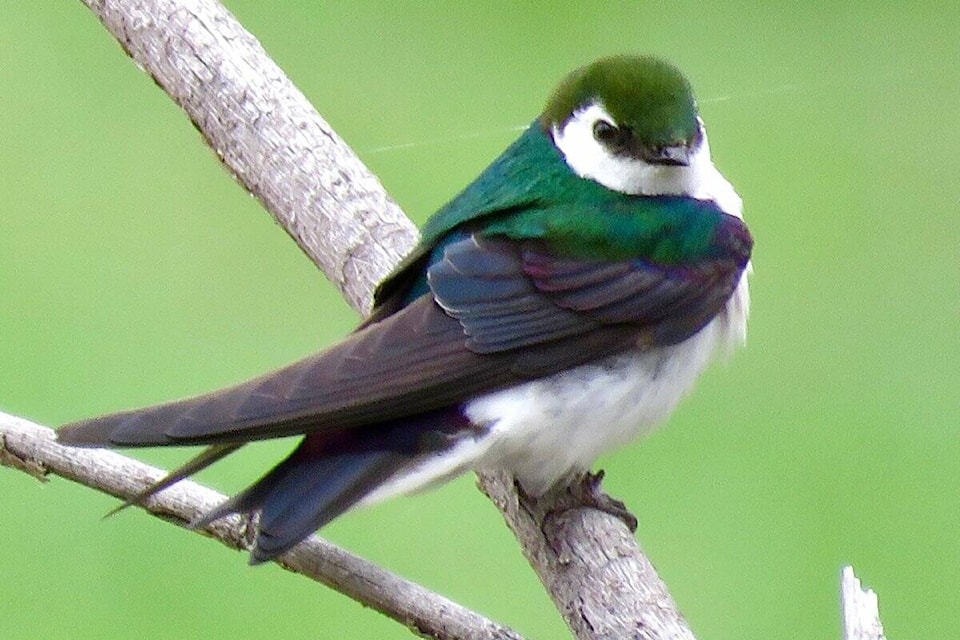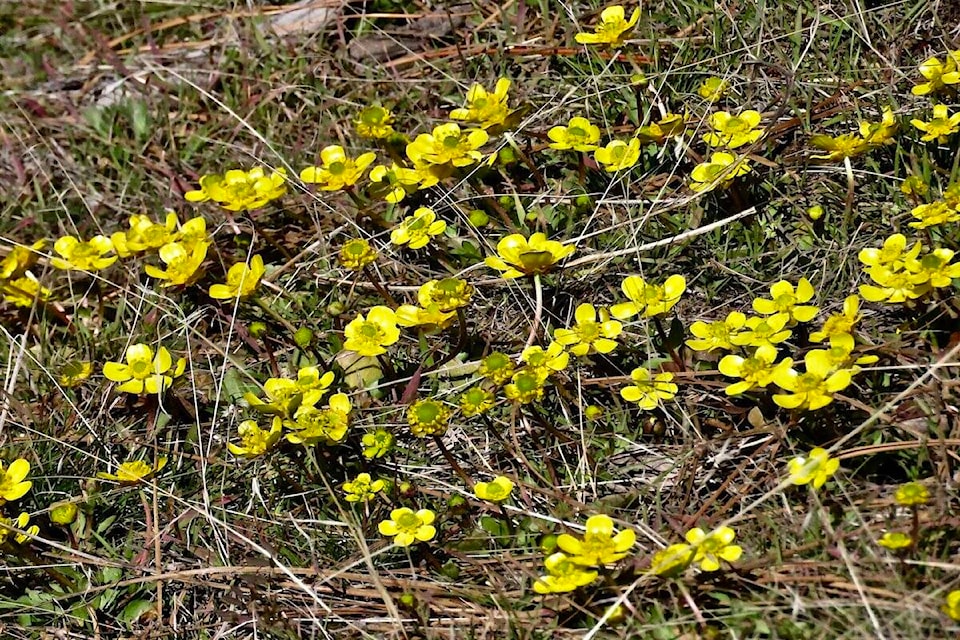~Column: Dianne Bersea
Spring doesn’t seem quite like I remember…all nicely warming temperatures, lovely soft spring showers, rain even sparkling in the sun. The last few years seem to have been damp and cold with late season snow.
A friend even attended a seminar on ‘How to plant & maintain your garden in cooler temperatures.” We’d encountered each other at a nesting site of Great Horned owls that had drawn viewers.
Margaret, an accomplished naturalist, indicated that the fuzzy feathered owlets, at slightly smaller than the adult bird, were at an appropriate level of development for early April. So owls were on schedule.
In fact I shouldn’t complain. Recent birding walks have produced the ultimate sign of spring…several dozen Violet Green swallows, wheeling and darting in the light and shadow of a deep ravine.
Meanwhile, the Northern Rough-legged swallow hasn’t yet appeared at its usual very busy nesting sites, tucked along the silt cut-banks of the KVR, a retired railway route.
Flowers, in some cases, might be a bit early. Here in the South Okanagan, almost everyone announces the first Sagebrush buttercup the minute they see one. Some of the first buttercups appeared in mid February. The Sagebrush buttercups are on the go, even popping up through snow!
I’m always on the look out for the amazing Bitter Root, whose low, short spaghetti-like leaves appear well before the exotic, lovely, palm-sized multi petal pink flower. On an early March jaunt, the flat spiral of Bitter Root leaves made stepping anywhere beyond the trail a fraught experience.
Another spring upstart is the singular, narrow, slightly iridescent greenish-blue-purple stem of the Mariposa Lily. It remains flower-less until late June or early July. It’s a tease that one is, and a favourite just the same.
In the West Kootenay, where there is more moisture and snow on mountain hilltops and perhaps remaining in sheltered valleys, the birds and flowers may arrive a bit later. Eons ago, when I lived in Kaslo, I remember the Calypso Orchid as a special find, becoming its showy best from mid-May into June.
Asters, phlox, lupines and shooting stars qualify as spring flowers throughout south-central BC, with the Arrowleaf Balsamroot a stunning spring beauty on dryer southern hillsides across the territory.
Sadly there are challenges this season that may have noticeable impact. We can’t overlook the low snow pack and inevitable lower water flows.
On moving to the dry Okanagan, water was on my mind. A new acquaintance pointing at “those large lakes,” assured me I should have no worries. That’s when geography 101 water cycle diagrams from years ago, mocked our casualness. Water in equals water out.
We sometimes fail to connect the two events. Even with huge lakes in all the major valleys we must take care for a trusty water flow.
In the meantime, may we enjoy our natural wonders as they ‘spring’ anew, to bring us extraordinary wonders…on the wing, or pushing up through ancient soils… to surprise us again with their colourful exuberance.




